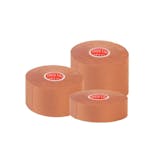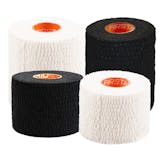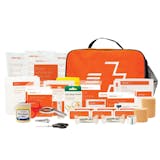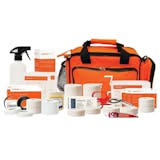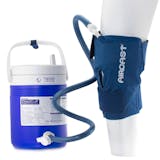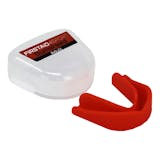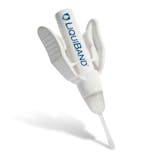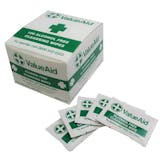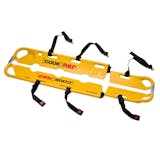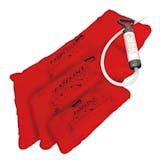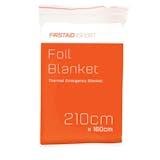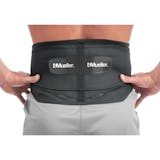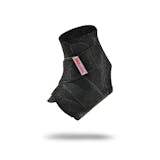How to Treat Shin Splints
 Shin splints, medically known as Medial Tibial Stress Syndrome (MTSS) if bone related and Exertional Compartment Syndrome (ECS) if muscle related is a common injury in runners, the causes are widely debated however studies suggest a combination of methods to help treat and prevent this injury.
Bone related shin pain is far more common than muscular shin pain and is the result of three variables; body mechanics, extent of activity and bone density. Body mechanics refers to your foot type, foot strike and stride, and body composition all of which can be manipulated to alleviate the chance of shin splints occurring.
For muscle related shin pain, the best method to ease pain, encourage healing and prevent further injury is foam rolling, run your shins and calves over a foam roller to loosen the fascia, in addition using arch supports can also help alleviate stress on the affected muscles.
Always refer to your GP for proper diagnosis, and ensure you follow the R.I.C.E method of rest, ice, compression and elevation in the initial onset of pain. You may also need to consider other methods of training to reduce the impact stress on your shins, such as swimming.
When training, footwear is extremely important, and worth investing in. Many sport shoe retailers now provide gait analysis which is a fantastic tool in determining your foot type and sourcing the right footwear individually suited to your needs, it may also be worth considering footwear that limits pronation, along with additional arch supports.
Several studies have also found that Shock Absorbing Insoles along with suitable calf stretching has a significant impact on the rehabilitation and prevention of shin splints (Loudon & Dolphino, 2010, Craig, 2008, Patel, Roth & Kapil, 2011). In addition, various brands such as Mueller Sports Medicine have designed supports and braces to apply compression to the shin area for added support during training.
Yoga is a fantastic way to train and strengthen your hips and core which will improve foot strike and body mechanics, as well as improving the range of motion around all joints (Woodyard, 2011, Tekur et al. 2008, Tracy & Hart, 2013).
Nutrition plays a large part in our lives and as an athlete be it professional or recreational, fuelling your body correctly for sport is essential, and for bone related injuries calcium and vitamin D intake is crucial in healing and prevention of injury (Patel, Roth & Kapil, 2011).
There is not a single preventative method that works alone in preventing shin splints from occurring however using a combination of methods advised in this article will significantly reduce the likeliness of shin splints, keeping you in full training and off the sidelines.
Shin splints, medically known as Medial Tibial Stress Syndrome (MTSS) if bone related and Exertional Compartment Syndrome (ECS) if muscle related is a common injury in runners, the causes are widely debated however studies suggest a combination of methods to help treat and prevent this injury.
Bone related shin pain is far more common than muscular shin pain and is the result of three variables; body mechanics, extent of activity and bone density. Body mechanics refers to your foot type, foot strike and stride, and body composition all of which can be manipulated to alleviate the chance of shin splints occurring.
For muscle related shin pain, the best method to ease pain, encourage healing and prevent further injury is foam rolling, run your shins and calves over a foam roller to loosen the fascia, in addition using arch supports can also help alleviate stress on the affected muscles.
Always refer to your GP for proper diagnosis, and ensure you follow the R.I.C.E method of rest, ice, compression and elevation in the initial onset of pain. You may also need to consider other methods of training to reduce the impact stress on your shins, such as swimming.
When training, footwear is extremely important, and worth investing in. Many sport shoe retailers now provide gait analysis which is a fantastic tool in determining your foot type and sourcing the right footwear individually suited to your needs, it may also be worth considering footwear that limits pronation, along with additional arch supports.
Several studies have also found that Shock Absorbing Insoles along with suitable calf stretching has a significant impact on the rehabilitation and prevention of shin splints (Loudon & Dolphino, 2010, Craig, 2008, Patel, Roth & Kapil, 2011). In addition, various brands such as Mueller Sports Medicine have designed supports and braces to apply compression to the shin area for added support during training.
Yoga is a fantastic way to train and strengthen your hips and core which will improve foot strike and body mechanics, as well as improving the range of motion around all joints (Woodyard, 2011, Tekur et al. 2008, Tracy & Hart, 2013).
Nutrition plays a large part in our lives and as an athlete be it professional or recreational, fuelling your body correctly for sport is essential, and for bone related injuries calcium and vitamin D intake is crucial in healing and prevention of injury (Patel, Roth & Kapil, 2011).
There is not a single preventative method that works alone in preventing shin splints from occurring however using a combination of methods advised in this article will significantly reduce the likeliness of shin splints, keeping you in full training and off the sidelines.


